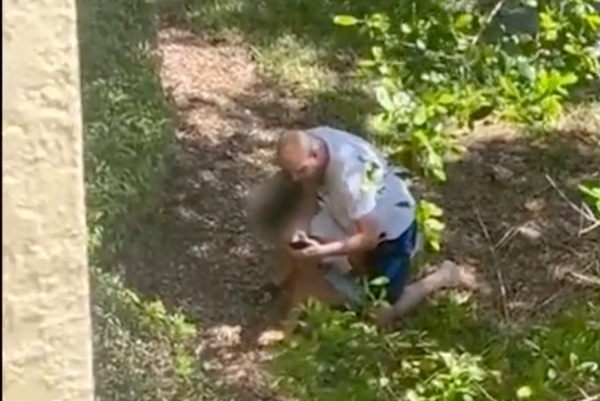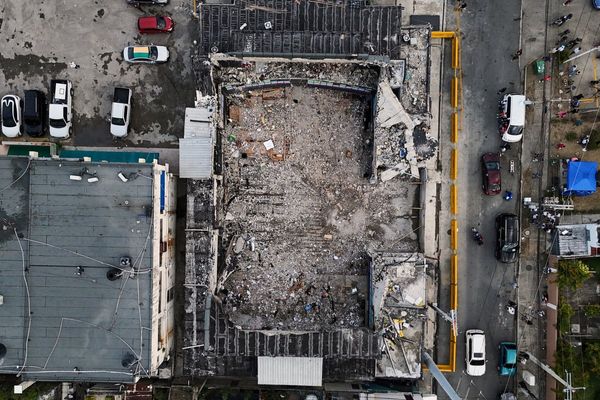
The steep trail down from Têtes de Louvie plummets over 1,600 feet over two kilometers and deserves my full attention, even with the help of trekking poles to keep me balanced, but I’m having a hard time tearing my gaze off the picture-perfect emerald green lake beckoning me from below.
Nestled among jagged peaks and surrounded by alpine meadows blanketed in wildflowers, the startlingly bright Lac de Louvie looks like it has always nourished the squeaking marmots and elusive Ibex that make their home here, but only 100 years ago, this area was a grazing pasture for cattle.
It's just one example of how water has transformed the landscape of Switzerland’s Val de Bagnes from rural farming community to thriving and prosperous resort. First, glaciers carved out the valleys and peaks that have drawn mountaineers for decades. Then came the channels cut into the earth in the 17th century, known as “bisses,” that carry water impossible distances and allowed locals to irrigate land and tend to cattle.
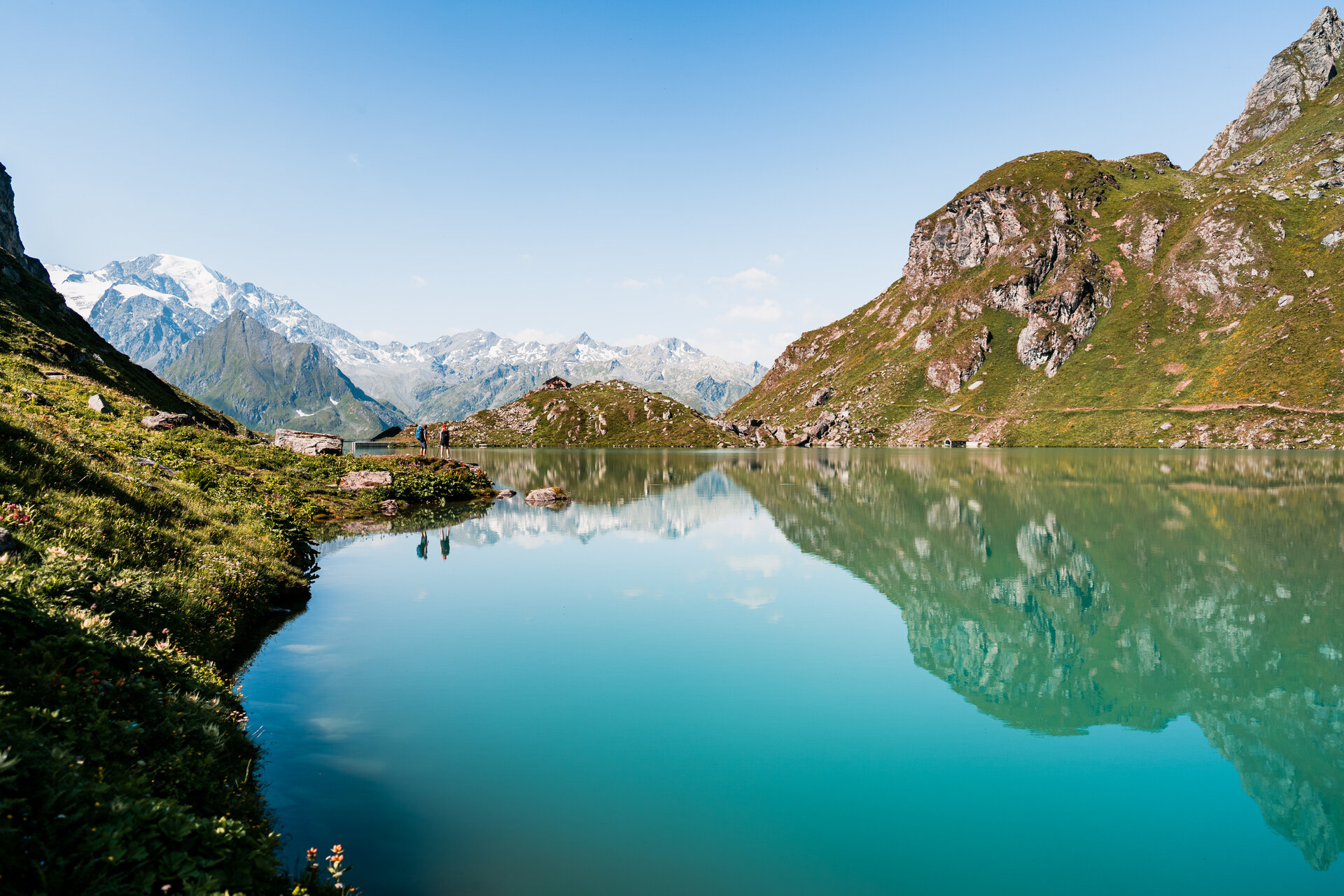
Finally, the Mauvoisin Dam and hydroelectric power station was built in the 1950s, securing the valley’s position as a world-class tourist destination that draws people like me from around the globe today. It makes sense to me, then, to explore these landscapes in a fluid manner, on skis as I did in 2022 doing some of the best powder skiing of my life, or in trail running shoes as I’m doing today.
I’m being escorted by my local guide, Elena Bonanomi, on a 40 km run around the mountains of Verbier, where she moved from Berne a couple of years ago. I arrived directly via train from Geneva airport to the bottom of the gondola in the town of Les Chable the day before wearing my running shoes and carrying everything for three days in a daypack ready to discover the lush summer landscape on foot.
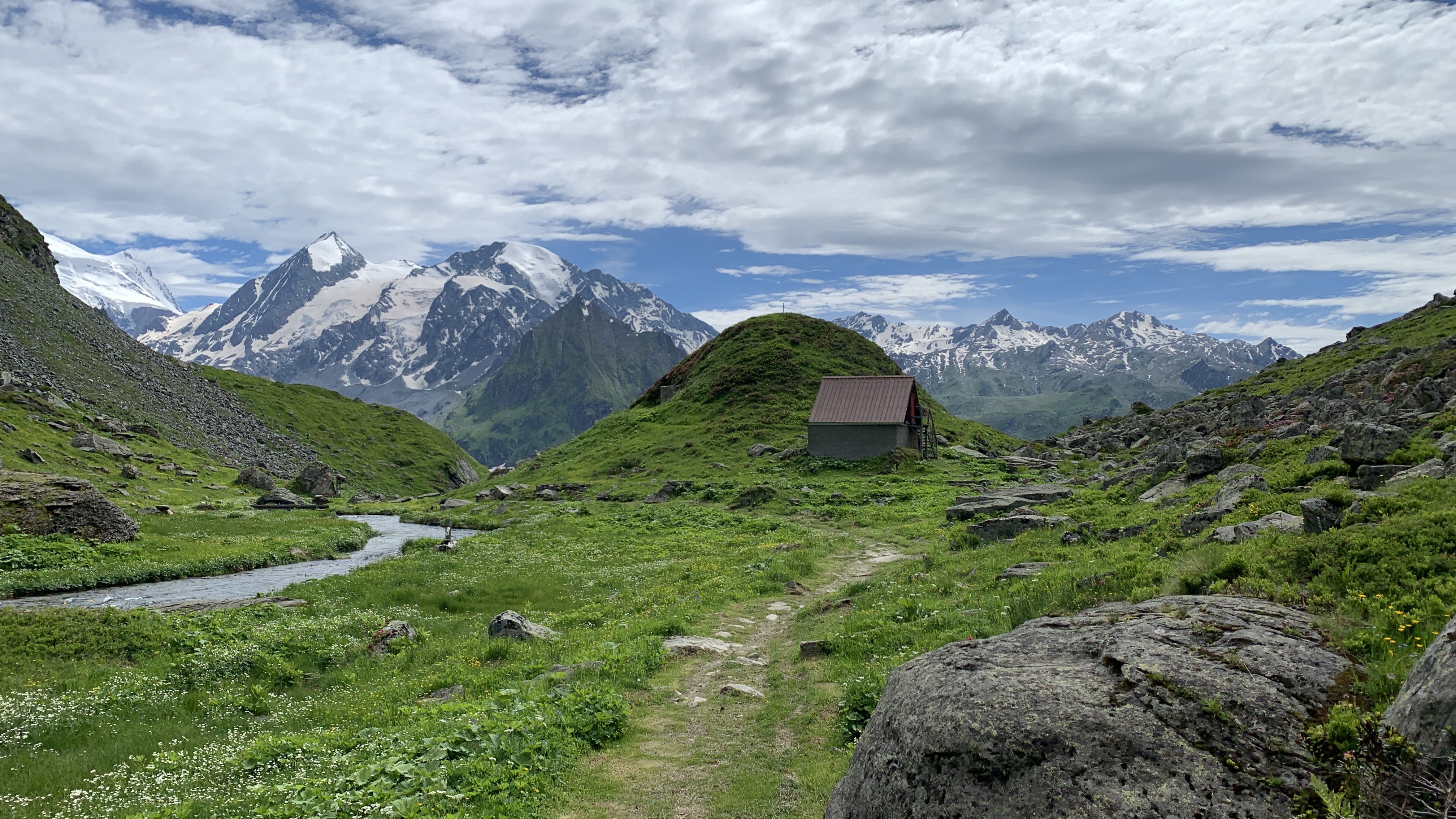
After two gondolas to Les Ruinettes, our route took us along the Bisse du Levron from where the impressive dam soon came into view, dominating the northern end of the U-shaped valley. We ran and hiked for around 10 km on day one, gaining some 500 meters along the way. Between the climbing and altitude, I’m relieved to arrive at the tranquil Cabane de Louvie where we'll spend our first night. Positioned at the southern end of the lake, the cabin was built in 1997 and is part of the extensive alpine hut system that makes multi-day runs and treks so accessible here.
Between those huts, Verbier Val de Bagnes has 21 appealing and demanding routes covering 415 km with 33,000 meters of elevation and landscapes ranging from forests to alpine peaks to glaciers.
“You can go out and never do the same trail twice so that makes it very special,” says Bonanomi who has run virtually every trail in the area.
“You have so many options. I mean, you’ll have to take a few months off work to run all the options that you have in the valley,” she laughs.
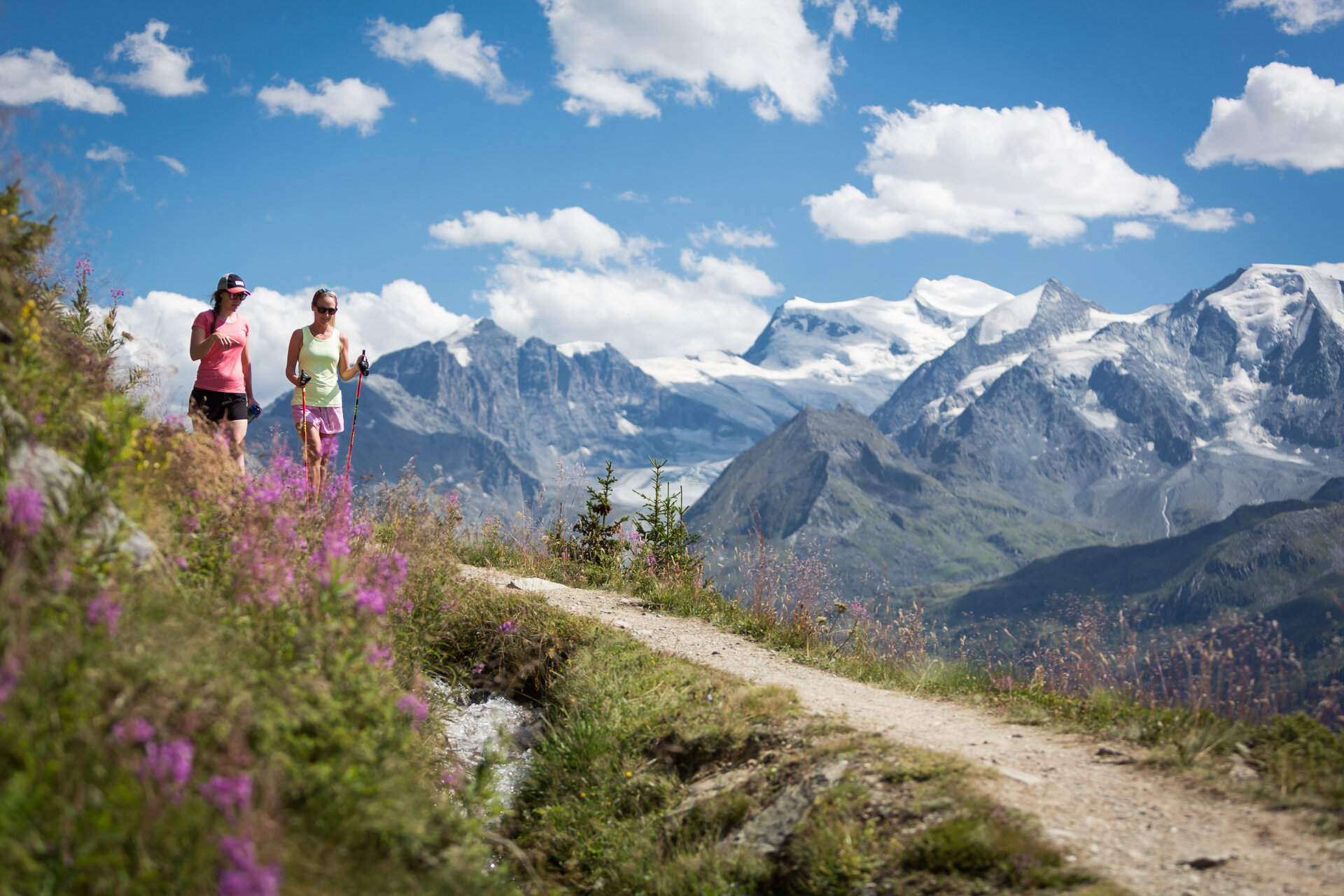
Our itinerary pieces together several different trails, all of which are now featured on a new trail running guide that Verbier Tourism has produced. These routes have been mapped out by local athletes such as Emily Vaudan and support people who want to come here and move fast and light.
“I think this trail running map absolutely great,” says Bonanomi on finding a route when you arrive. And if you don't find a trail to your liking on the map?
“For everything else you can trail run on every route that is made for hikers and you’ll just be faster.”
We make it to the cabin in time for Sunday lunch and groups of locals are enjoying Swiss fare on the sunny deck. We drop our packs and join them, tucking into savory polenta and Croute au Fromage (that’s grilled cheese on Swiss steroids to you). I’m quickly remembering that alpine Swiss cuisine is based on the assumption that you’ve just put in a lot of miles on foot or skis and glad to have worked up a hunger.
When our appetites are satiated, we check in and find a traditional cabin sleeping arrangement of dormitories with four mattresses and warm comforters in each nook – simple but comfortable. We’re first to arrive so we fling our sleeping bag liners down to save our beds then head back out into the sunshine for an icy plunge in the lake and an afternoon of reading on the deck. Other explorers come and go, sharing stories of the journeys that brought them here and discussing trail conditions and the occasional need for crampons despite the season.

Most of our trailmates are hikers, carrying large backpacks, but there are a few travelers like ourselves, making the journey in lightweight style with running backpacks or hydration packs stuffed with gear. Of course, you can enjoy these trails at any pace you like, but I’m enjoying the challenge of running, the relinquishment of heavy packs and the opportunity to see more in less time.
In the morning, we rise in the dark knowing we have a long day ahead of us. After fuelling up with fresh bread and coffee, we begin our descent to the valley floor via a steep trail, pausing in the village of Fionnay at the base of the dam to refill our water bottles at a spring before commencing a long and strenuous seven-kilometer climb that’s to culminate at the Corbassière Glacier.
The temperatures rise as we run alongside another bubbling bisse, but we make good time and arrive at Cabane Panossière at noon where we enjoy a welcome slice of traditional blueberry tart and gaze at the dazzling six-mile long glacier and imposing Grand Combins massif.

Just as I start to melt into one of the deck chairs provided by the cabin, it’s time to hit the trail again. With 10 km behind us, we have another eight to go and they’re memorable. A short but steep descent leads to a dizzying 688-foot-long footbridge suspended by cables that swings gently 229 feet above the glacier. Once we reach solid ground again, it’s another lung-busting climb up to Col des Avouillons at 8,687 feet above sea level and one last glance back at the glacier before beginning our descent through lush pastures.
Getting there: Return direct flights from Edinburgh to Geneva cost from £129 with easyJet. A first-class, return train ticket from Geneva Airport to Verbier costs from £69/€81 (the Swiss Travel System provides a range of exclusive travel passes and tickets throughout the rail, bus and boat network). The Verbier Infinite Playground Pass (VIP PASS) gets you on the chairlifts and gondolas for free.
Accommodations:
• Mont Fort Swiss Lodge – single room available from CHF75 / £65 per room breakfast included for your first night in Les Chable before hitting the trail.
• Cabane Louvie - lakeside dormitory style accommodation available from CHF78 / £67 including evening meal, breakfast and shower token.
• Cabane Brunet - friendly dormitory style accommodation available from CHF80 / £69 including evening meal, breakfast.
Where to eat: In the huts, your meals are included. In Les Chable, Kanpâna serves up elegant traditional Swiss and French cooking such as handmade paste with chanterelle mushrooms and the locals love pizza and bistro fare at lively Le Koti.
Mid-afternoon, we finally round the bend to friendly Cabane Brunet where a herd of healthy-looking Hérens cows herald our arrival with their clanging bells. My Coros Pace 3 tells me it's been a 3,520 calorie day and to my delight, I discover that this valley provides the perfect micro-climate to grow apricots. The locals have thoughtfully baked them into another mouth-watering tart and I don’t hold back.
We have a couple of hours at the peaceful cabin to shower, stretch and drink a local beer. Dinner is family style – generous portions of pumpkin soup, green salad and pasta with local chanterelle mushrooms. As a digestif, we’re treated to a liquor made using the local grasses and wildflowers before climbing into our bunks.
For our final day, we have choices – one of the enchanting luxuries of the Swiss trail system. Our itinerary has us on a short run downhill to Champsec and taking a bus back to Verbier. There’s a more challenging run along the ridgeline, but that requires an early start and the possibility of my missing a flight, plus we wake up to rain.
Despite my musings of the role of water in this valley, it doesn’t rain that much here – in fact, the area sees about 50 percent less rain than elsewhere in Switzerland, which explains the intricate irrigation systems in place. It also makes Verbier an appealing option for those who want to explore the trails, plus it’s quieter than more famous trail running destinations like Chamonix. In our three days, we’re alone on the trail far more than we’re in the company of others.
“I always feel very free here when I run on the trails. There are people which is super nice, because I can say hello, but I don’t have to constantly stop to let people pass,” says Bonanomi.

Fortunately, she knows the trail system like the back of her hand and formulates a new plan over breakfast: we’ll run 11 km through a shaded forest to the bottom of La Pasay chairlift, flash our Verbier Infinite Playground Passes and ride it up to the top for free and enjoy coffee with a view, then we can descend directly to town for lunch.
By the time we’ve finished breakfast, the clouds are clearing and everything goes to plan. Two and a half hours later I’m sipping a cafe au lait, feet gently throbbing and admiring the splendid valley that has been my adopted home for the last three days.
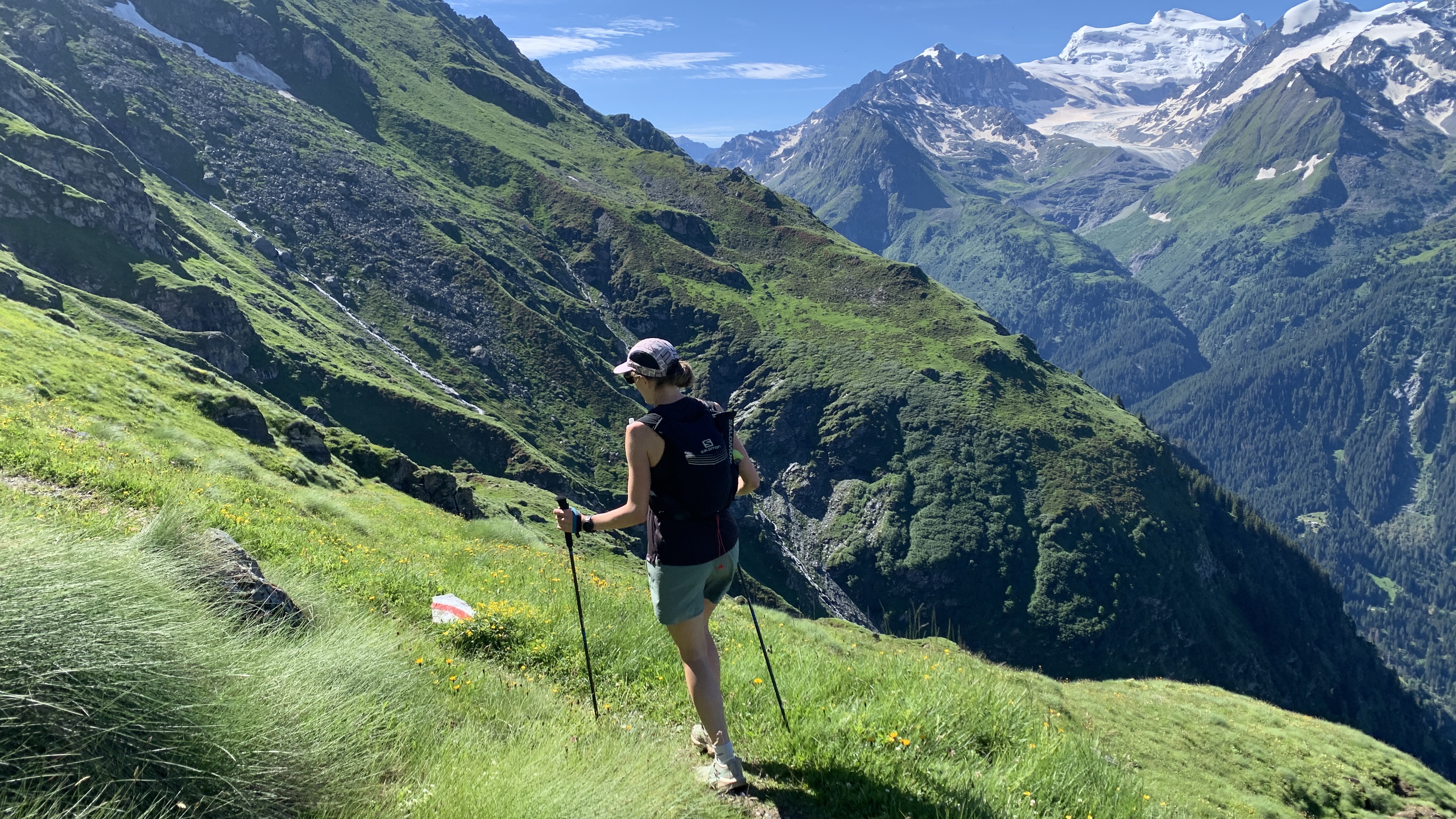
Soon, it’s time to return to Le Chable via chairlift and a gondola which deposits us right at the train station and from here, an easy series of comfortable, quiet trains whisks me to Geneva airport after lunch. Before I know it, my alpine dream lives on only in my aching legs and the memories of a lifetime.
What to pack for trail running in Verbier
Everything that came with me on this trip needed to go on my back, so I had to pack lighter than ever. The weather had been quite variable in the weeks leading up to my mid-July visit and I was advised to bring a waterproof jacket and rain pants, which meant my running vest wouldn't cut it.
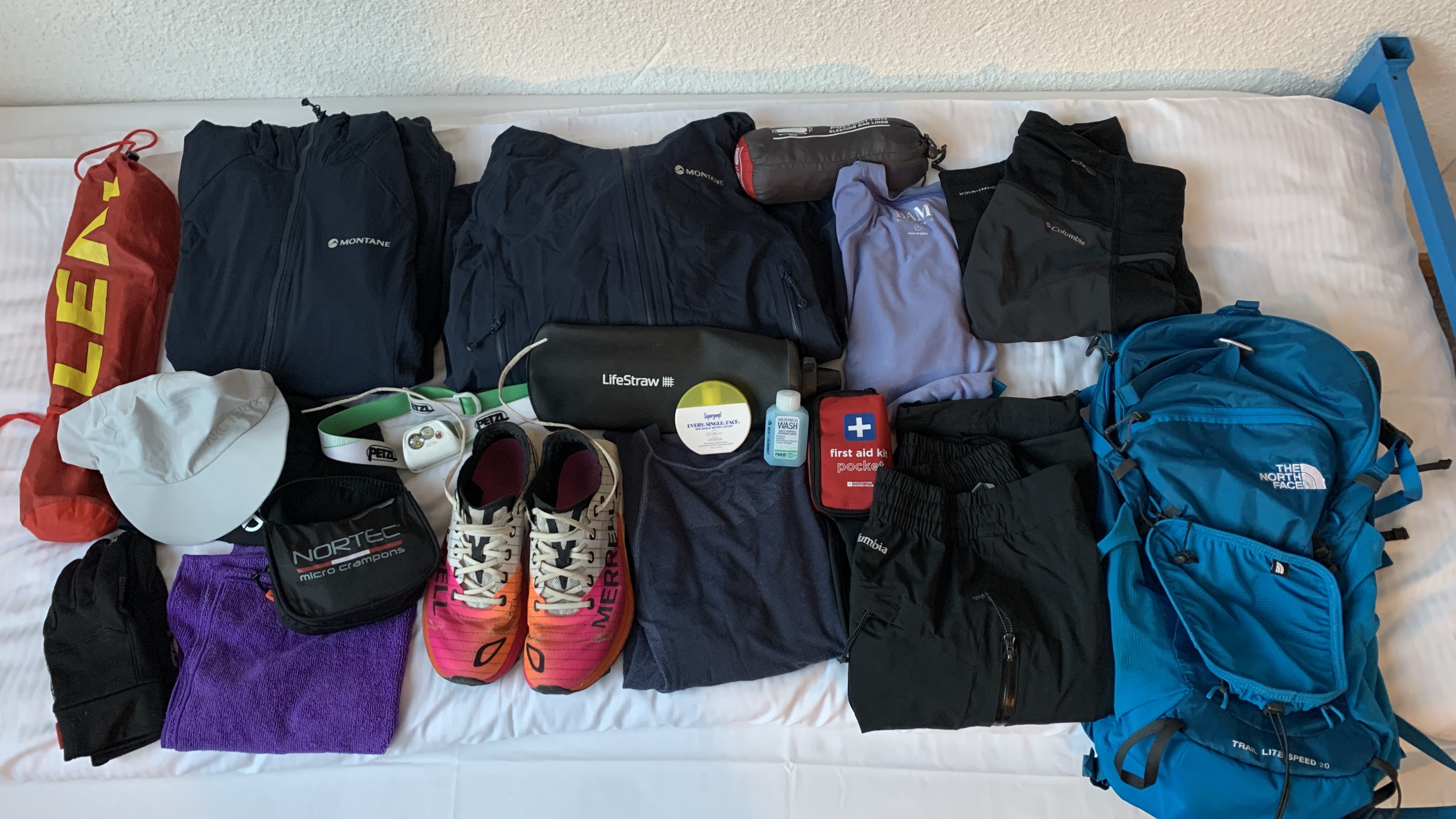
In the end, I chose The North Face Trail Lite Speed 20-Litre Backpack which squeezed under the seat in front of me on the plane, made for a pretty comfortable carry for the type of mountain running I would be doing and fit the following:
- Trail running shoes: Merrell Matryx 2 Long Sky
- Socks: 2 pairs of trail running socks plus a warmer pair of Darn Tough hiking socks for evenings
- Leggings: Columbia Women's Back Beauty Warm Hybrid Leggings made with Omni-Wick
- Shorts: The North Face Trailjammer Shorts are far more Courtney Dauwalter than I’d usually wear for running, but meant I had a loose, comfortable option for lounging in the evening and doubled as pajama bottoms in our shared dorms.
- Running tops: I ran in the BAM Women’s Novea Crew Neck Training Top which never got stinky, and carried my Arc’teryx Silene Crew Shirt SS as a light, dry layer for evenings.
- Base layer: The Jack Wolfskin Seamless Wool Long Sleeve is the lightest base layer I own and has the magical properties of merino.
- Insulated jacket: The Montane Fireball Lite Hooded Jacket is an amazing mid layer, but provided ample lightweight insulation for cold nights at the cabin.
- Waterproof jacket: My Montane Phase Lite jacket didn’t see much action, but it didn’t weigh me down.
- Rain pants: I chose my Columbia Hazy Trail Waterproof Walking Trousers because they’re light, soft and not too baggy, but luckily I never needed them.
- Running hat: Arc’teryx Paltz cap
- Sunglasses: SunGod Tempests
- Trekking poles: Leki Micro Trail Vario Carbon
- Sleeping bag liner: Mountain Warehouse Liner
- Hat, gloves, neck gaiter
- Water bottle: LifeStraw Peak Series Squeeze Bottle which rolls up when empty.
- Running crampons: Nortec Sport Micro Crampons
- Micro towel (hand size)
- First aid kit
- The best hydration packs 2024: on-the-go refuelling for your runs




